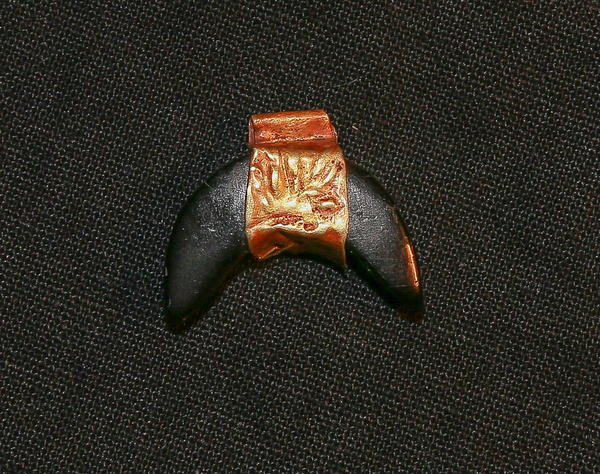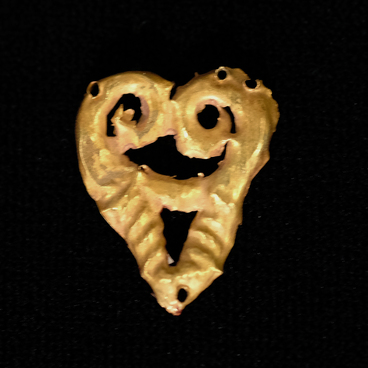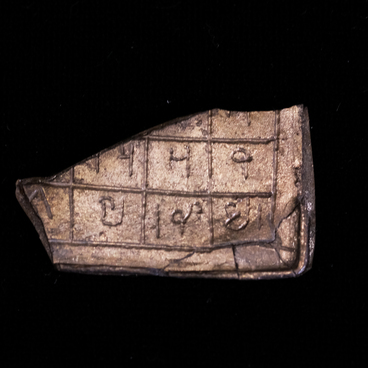The crescent-shaped pendant made of jet — black stone — with a gold plate was found in a woman’s burial. The Sarmatians did not leave any significant monuments and structures to get an idea of all the features of their life, traditions, social structure. The Scythian-Sarmatian antiquities are revealed to us only through the burial mounds. Nomads have always valued gold and not only as a precious metal. According to the ideas of the Sarmatians, the gold served for communications with the gods and spirits of their clans. That is why sacred vessels, weapons, jewelry and household items made of gold were necessarily present in the burials of the Sarmatian kings and the aristocracy.
The burial in which the bead from our collection was found belonged to a noble Sarmatian woman of high rank. This is confirmed by the many valuable items discovered there: a large number of beads, two pendants lined with gold foil and a black-glazed Greek bowl with a low drip pan. The bottom of the bowl is decorated inside with a pattern of four rows of notches around four palmettos plant ornaments in the form of palm branches. The bowl was made in Attica in 330–300 BC.
In addition, a Greek amphora stamped with a two-line symbol was found in the burial. The amphora was made in Heraclea of Pontus in the 340s–330s BC. The name of the craftsman is indicated on his symbol as Dionysius. In general, similar stamped images have been dated since the second half of the 4th century BC.
Heraclea of Pontic in those days was one of the most active trade counterparties in the Black Sea region. Amphoras were brought from there. Heracles wine of the late 4th century BC was especially famous even outside the Black Sea basin. It was mentioned by the ancient Greek philosopher Theophrastus, who praised such qualities of wine as strength and aroma.
In 2005, the pendant made of black jet and other precious items were exhibited at the Astrakhan Steppe Treasures show at the National Museum of the Palazzo Venezia in Rome.
The burial in which the bead from our collection was found belonged to a noble Sarmatian woman of high rank. This is confirmed by the many valuable items discovered there: a large number of beads, two pendants lined with gold foil and a black-glazed Greek bowl with a low drip pan. The bottom of the bowl is decorated inside with a pattern of four rows of notches around four palmettos plant ornaments in the form of palm branches. The bowl was made in Attica in 330–300 BC.
In addition, a Greek amphora stamped with a two-line symbol was found in the burial. The amphora was made in Heraclea of Pontus in the 340s–330s BC. The name of the craftsman is indicated on his symbol as Dionysius. In general, similar stamped images have been dated since the second half of the 4th century BC.
Heraclea of Pontic in those days was one of the most active trade counterparties in the Black Sea region. Amphoras were brought from there. Heracles wine of the late 4th century BC was especially famous even outside the Black Sea basin. It was mentioned by the ancient Greek philosopher Theophrastus, who praised such qualities of wine as strength and aroma.
In 2005, the pendant made of black jet and other precious items were exhibited at the Astrakhan Steppe Treasures show at the National Museum of the Palazzo Venezia in Rome.



